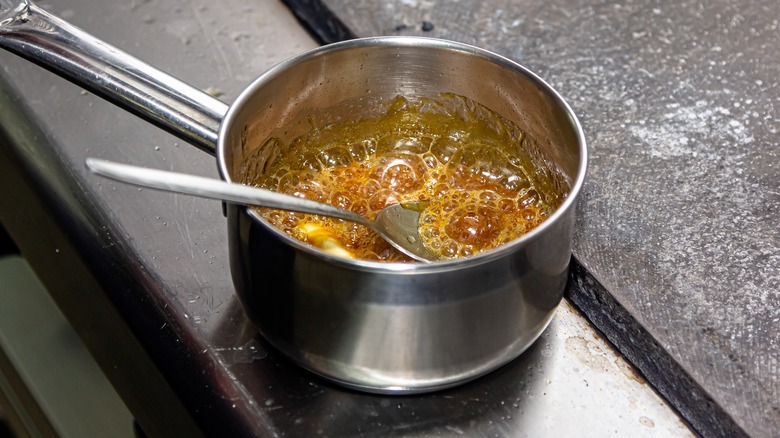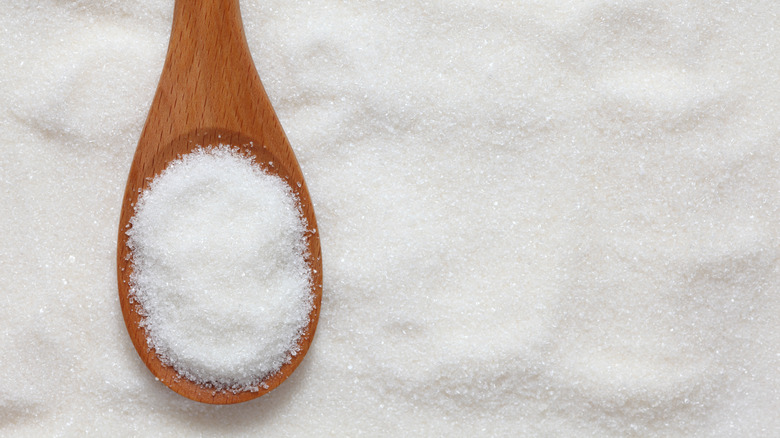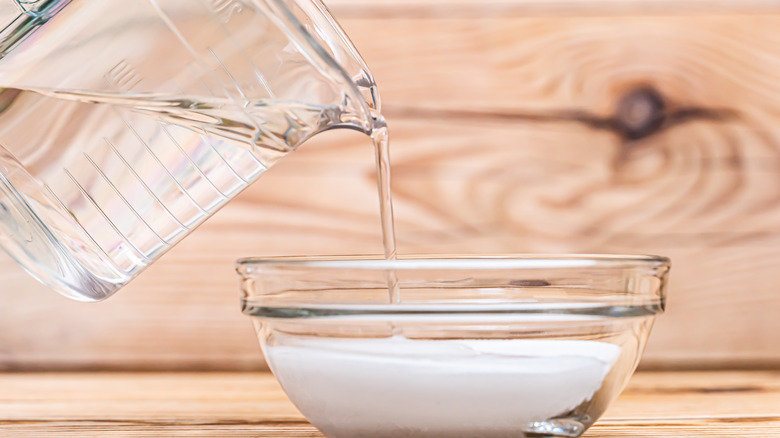Why Your Spoon Matters When Stirring Melted Sugar
In the wide world of candy makers concocting delicious confectionary creations, few skills are as highly regarded as knowing how to caramelize sugar. When you're melting sugar, considerations of temperature are of the utmost importance, you need the right set of tools, and above all, you need patience.
Essentially, you'll need to diligently observe the simmering sweet syrup, and manipulate the melting mass enough to ensure all your sugar is cooked but delicately enough that it remains fluid. You need to stop stirring homemade caramel because this unnecessary movement results in crystallization, but if an errant bit of sticky syrup refuses to cooperate and you need to take a spoon to it, you'll want to make sure you're using the right utensil for the job. Ultimately, a stainless steel spoon is the best way to keep your melting sugar free of contaminants and clumps, but a wooden spoon allows for better temperature regulation.
Change causes crystallization
Melting sugar sounds simple, but those who give it a try quickly find out how fickle this confectionary task can be. But before you give up on your dessert dreams, you should know there is still dissension in the culinary community around the best methods for melting sugar.
A wooden spoon doesn't acquiesce to the heat of the dish surrounding it during the stir. A metal spoon will take on the temperature of whatever food it's in and can potentially burn you while candy-making if you aren't cautious. When a cold metal spoon starts stirring, on the other hand, it could cause the sugar to start to solidify, or crystallize.
However, some sources argue the exact opposite side of this spoon split. Wooden spoons, these cooks contend, are harder to clean and more likely to carry contaminants. Any stray bit stuck to your wooden spoon has the potential to cause crystallization when it is exposed to the melting sugar.
If you want a tool that balances the risk of sugar crystallization with the threat of bodily harm, a kitchen-safe rubber spatula may be the utensil for you. This handy utensil is heat resistant and easy to clean, but be warned. Make sure your plastic tool can handle the heat, or you could end up with bits of burned plastic in your melting sugar.
To stir or not to stir
When it comes to using the spoon, you should stir the sugar and water solution only until the sugar has been moistened, then put the mixture on the stove and watch it diligently while it cooks. Regardless of the tool used, if you continue stirring after it's begun to melt, you will end up with crystals.
Making dry caramel, a version of the sweet treat made without any liquid, also requires stirring to prevent burning. Dry caramel cannot crystallize, so the material of the tool is less important. Dry caramel can be more difficult to make, and the lack of liquid makes temperature regulation difficult, so you may want to use a heat-resistant kitchen utensil rather than one made from metal, just to keep you safe from scalding spoons.
In terms of preventative practices, you can use a little baking soda to deep-clean wooden utensils, which is an excellent way to keep your kitchen tool free of crystallization-causing contaminants. Also, adding a small amount (only a teaspoon or two) of an acid like lemon juice or vinegar to the sugar can chemically disrupt clumps as they form. Perhaps most importantly, a candy thermometer is important when making your own sweets, and this tool is especially essential when you're melting sugar. Ultimately, you should watch the pot, which is left on low heat, with eagle eyes, because sugar is prone to burning. Vigilance is the best solution to your caramelization vexations.


